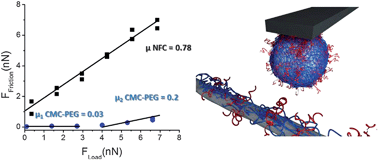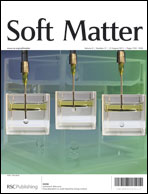Non-ionic assembly of nanofibrillated cellulose and polyethylene glycol grafted carboxymethyl cellulose and the effect of aqueous lubrication in nanocomposite formation†
Abstract
A facile route to significantly lower the frictional forces between cellulose nanofibrils (NFC) has been presented. The concept is based on the surface modification of NFC by


 Please wait while we load your content...
Please wait while we load your content...